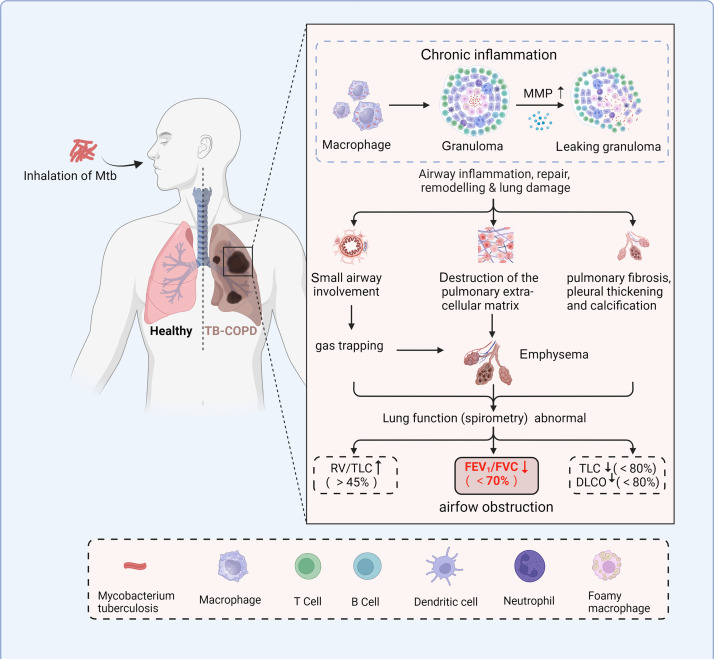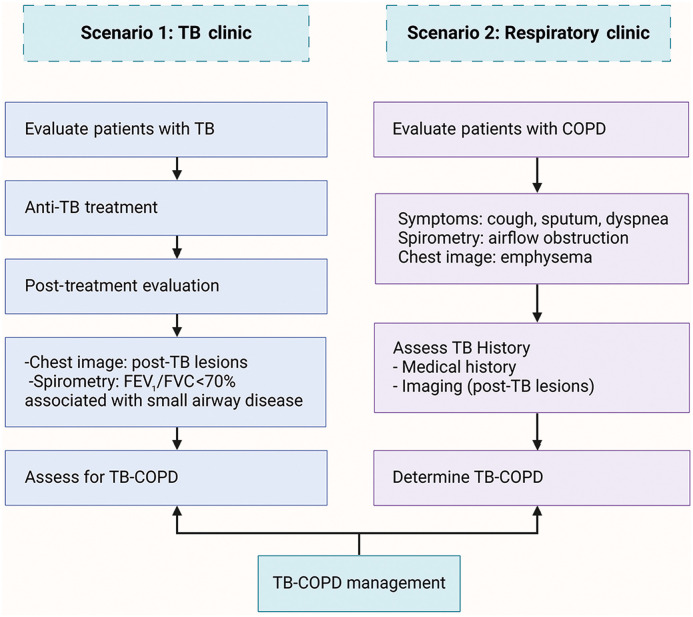结核病相关慢性阻塞性肺疾病认识的进展
Chinese medical journal pulmonary and critical care medicine
Pub Date : 2024-12-01
DOI:10.1016/j.pccm.2024.08.008
引用次数: 0
摘要
结核病显著增加了发生慢性阻塞性肺疾病(COPD)的风险,使结核病相关的COPD (TB-COPD)成为普遍存在的呼吸系统疾病谱系中的一个独特类别,特别是在低收入和中等收入国家。这种情况是由身体对结核病的免疫反应引起的,导致长期炎症和随之而来的持续性肺损伤。诊断方法,特别是支气管扩张剂后肺活量测定法,对于识别气流阻塞和确认结核-慢性阻塞性肺病至关重要。此外,探索潜在的生物标志物对于更深入地了解TB-COPD的发病机制和改善治疗策略至关重要。目前,这种情况主要使用吸入支气管扩张剂治疗,由于发生结核病的风险增加,建议谨慎使用吸入皮质类固醇。本综述深入探讨了结核-慢性阻塞性肺病的流行病学、临床表现、肺功能和影像学特征,详细分析了当前和未来的生物标志物和治疗策略。此外,它强调了重点研究的必要性,以弥合这一复杂疾病的知识和治疗差距。本文章由计算机程序翻译,如有差异,请以英文原文为准。


Advances in the awareness of tuberculosis-associated chronic obstructive pulmonary disease
Tuberculosis (TB) significantly increases the risk of developing chronic obstructive pulmonary disease (COPD), positioning TB-associated COPD (TB-COPD) as a distinct category within the spectrum of respiratory diseases prevalent, especially in low- and middle-income countries. This condition results from the body's immune response to TB, leading to prolonged inflammation and consequent persistent lung damage. Diagnostic approaches, particularly post-bronchodilator spirometry, are vital for identifying airflow obstruction and confirming TB-COPD. Furthermore, exploring potential biomarkers is crucial for a deeper insight into the pathogenesis of TB-COPD and the improvement of treatment strategies. Currently, this condition is primarily managed using inhaled bronchodilators, with cautious use of inhaled corticosteroids advised owing to the increased risk of developing TB. This review delves into the epidemiology, clinical manifestations, pulmonary function, and imaging characteristics of TB-COPD, scrutinizing current and prospective biomarkers and therapeutic strategies. Furthermore, it underscores the necessity for focused research to bridge the knowledge and treatment gaps in this complex condition.
求助全文
通过发布文献求助,成功后即可免费获取论文全文。
去求助
来源期刊

Chinese medical journal pulmonary and critical care medicine
Critical Care and Intensive Care Medicine, Infectious Diseases, Pulmonary and Respiratory Medicine
CiteScore
0.40
自引率
0.00%
发文量
0
 求助内容:
求助内容: 应助结果提醒方式:
应助结果提醒方式:


